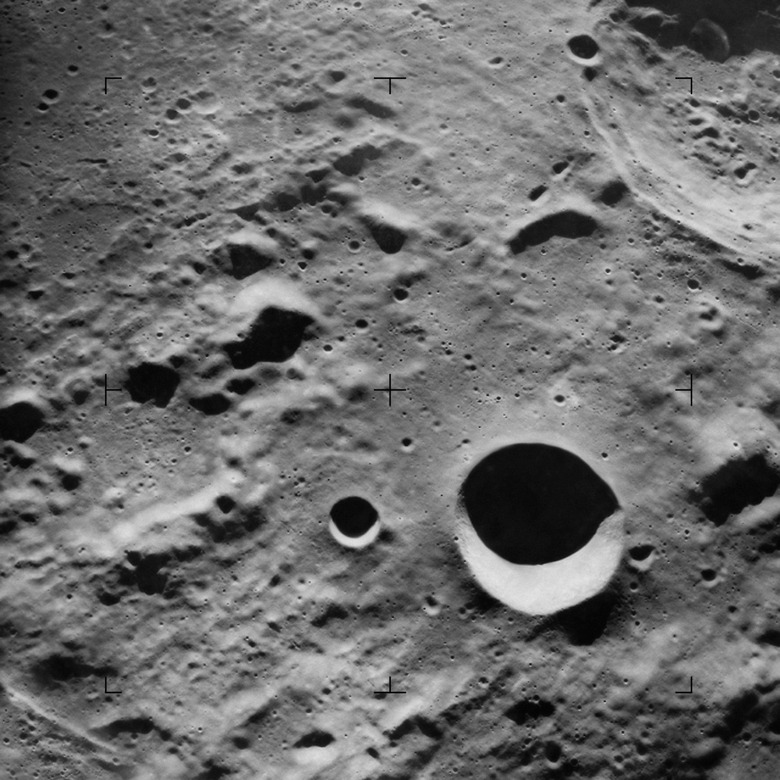What Has Been Found On The Moon?
The launch of the Soviet Union's Luna 1 on Jan. 2, 1959, marked the first step in a decades-long journey that would eventually unlock some of the secrets of Earth's satellite. In the years after the unmanned Russian probe's lunar flyby, discoveries made by other missions challenged traditional ideas about the moon and its formation and may help pave the way toward future moon missions and even permanent colonies.
The Genesis Rock
The Genesis Rock
One of the first major discoveries on the moon was the "Genesis Rock." Apollo 15's astronauts trained to look for unusual mineral samples on the moon, with the ultimate goal of discovering a piece of the moon's original, primordial crust. At first, the astronauts thought this sample represented their holy grail, but detailed examination of the rock proved disappointing. The Genesis Rock turned out to be a more common mineral called anorthosite, dating to early in the moon's history but not quite to its origin. Later missions found even older samples, but the Genesis Rock was still significant due to its size and makeup, giving geologists a look at the conditions that existed in the solar system less than 100 million years after its creation.
Orange Soil
Orange Soil
During the extensive lunar explorations of Apollo 17, astronaut and scientist Harrison Schmitt discovered an anomaly against the uniform, powdery gray surface of the moon. At first, he thought a reflection from his equipment was causing a discoloration in the dust, but he soon realized that he had discovered a patch of orange soil. The sample he took contained orange volcanic glass, revealing evidence of volcanic activity in the moon's distant past.
Deep Caverns
Deep Caverns
More evidence of the moon's volcanic history came in 2010. The Japanese Aerospace Exploration Agency had launched a satellite designed to survey the moon in 2007, and it performed a two-year study of the surface. A study of the data collected revealed the first confirmed evidence of lava tubes in the moon's crust. Scientists had theorized that caverns formed by lava were present beneath the surface, but this study represented the first concrete evidence of one of these caves. Future moon missions could use these caves as shelter, or astronauts could theoretically develop them into permanent bases of operation.
Water
Water
One of the most significant discoveries on the moon occurred in 2009. NASA's LCROSS probe surveyed the craters of the moon for more than three years, and once it reached the end of its operational lifespan, the agency crashed the probe into the surface. The impact at the Cabeus crater at the lunar south pole revealed something the scientists had long suspected, the presence of a significant amount water ice. Because water is an integral part of life support, energy generation and propulsion systems, its presence suggests that future missions could harness this resource in the quest for a more permanent presence on the moon.
References
- Lunar and Planetary Institute: Apollo 15 Mission
- Lunar and Planetary Institute: Apollo 17 Mission
- NASA: Apollo Expeditions to the Moon, Chapter 14
- NASA: Goddard Space Flight Center: Ice on the Moon
- NASA: Science News: Down the Lunar Rabbit Hole
- Space.com: "Significant Amount" of Water Found on Moon
- NASA: Apollo 17 Lunar Surface Journal
- Lunar and Planetary Institute: Lunar Mission Timeline
Cite This Article
MLA
Kazmeyer, Milton. "What Has Been Found On The Moon?" sciencing.com, https://www.sciencing.com/found-moon-4978/. 24 April 2017.
APA
Kazmeyer, Milton. (2017, April 24). What Has Been Found On The Moon?. sciencing.com. Retrieved from https://www.sciencing.com/found-moon-4978/
Chicago
Kazmeyer, Milton. What Has Been Found On The Moon? last modified March 24, 2022. https://www.sciencing.com/found-moon-4978/
